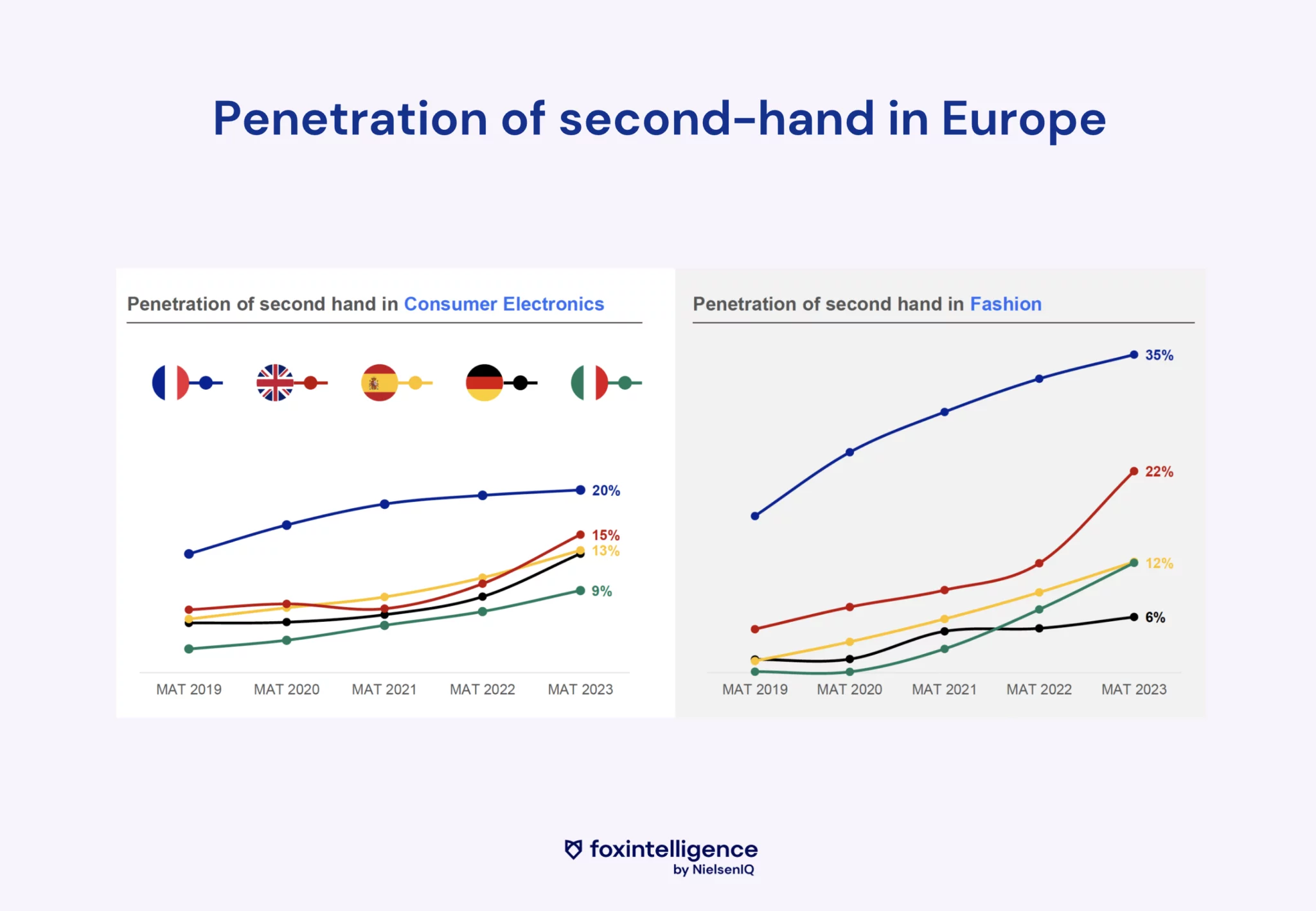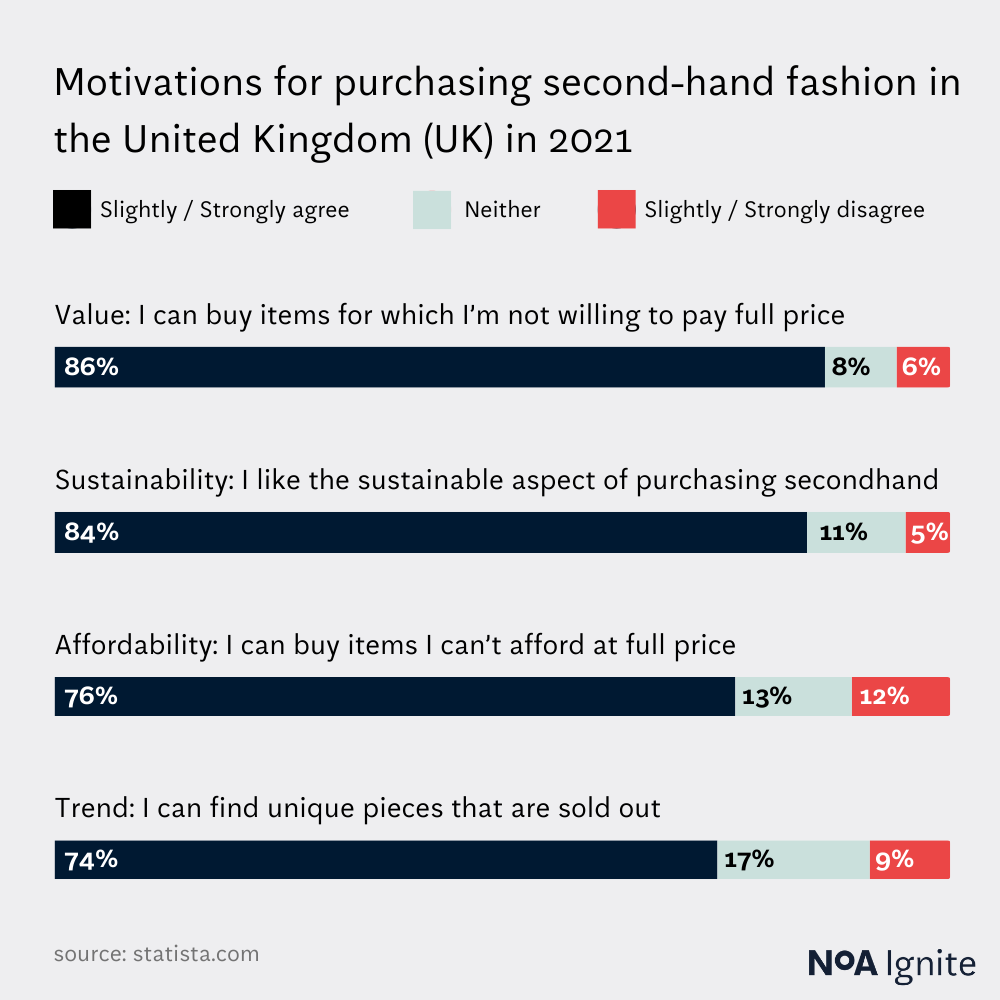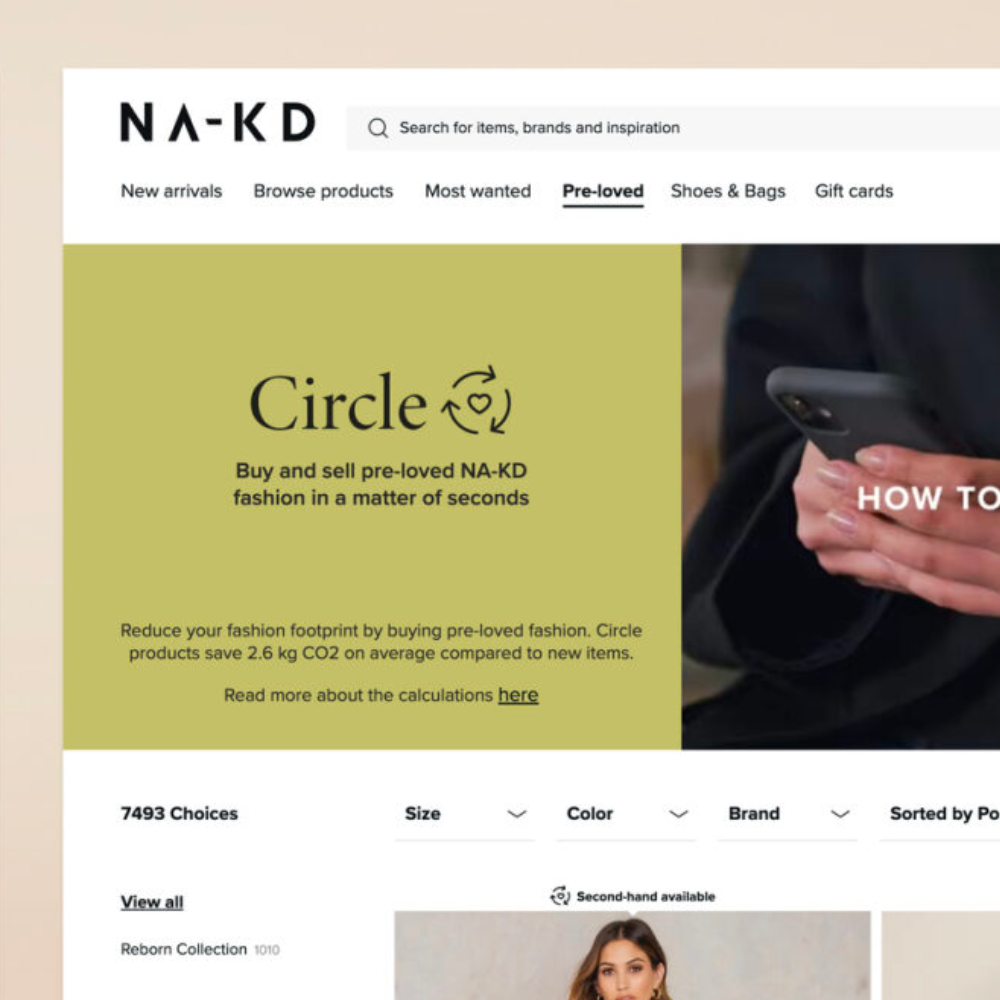Are big brands starting to embrace second-hand sustainability?
November 15, 2023 / 4 min read

Photo by Priscilla Du Preez on Unsplash
Table of contents
In recent years, we have witnessed a surge in the popularity of second-hand fashion and consumer electronics. This trend extends beyond simply buying and selling pre-owned items; it's part of a wider shift towards sustainability and conscious consumerism.
Retro Renaissance: The rise of second-hand trends
The trend for second-hand fashion is on the rise, with compelling numbers to tell the tale. Data from the top five EU economies reveals remarkable growth in this market. France is at the forefront, where second-hand attire now makes up an impressive 35% of the fashion scene, showing a notable rise from just a few years back. The UK is also catching up. Known for its high streets dotted with second-hand charity shops, the market share of second-hand fashion has climbed to 22% recently.
The thriving market in consumer electronics
The boom in pre-loved shopping extends beyond fashion and includes consumer electronics. With the rapid pace of today’s tech innovation, consumers often end up with gadgets that are fairly new but no longer needed. Instead of letting these electronics clutter their homes, many are choosing to sell them in the second-hand market.
France, once again, is leading the way in second-hand consumer electronics. A whopping 20% of the consumer electronics market is made up of second-hand and refurbished tech. Not to be outdone by France, the UK is not far behind with 15%. The trends showcase the growing appeal of second-hand consumer electronics, which now make up a sizable portion of the market.

Conscious Choices: The eco-economic appeal of second-hand
What's fuelling the shift towards second-hand fashion? Undeniably, sustainability is a key factor. With growing awareness of the environmental toll of fast fashion and the textile industry, consumers are seeking alternatives. Second-hand clothing offers a sustainable choice, extending the lifecycle of garments and reducing rubbish.
Moreover, younger generations are notably drawn to sustainable fashion practices. They are more aware of the ecological footprint of their clothing choices and are actively looking for ways to make a positive impact on the planet. The rise of second-hand fashion resonates well with their values.
Inflation is helping
Cost is also a significant draw towards the second-hand market. The cost-of-living crisis is eating away at disposable income, pushing consumers to be more budget-conscious. Often priced much lower than retail value, used items are a dream for bargain hunters.
This trend is especially noticeable in the consumer electronics sector, where affordability without skimping on quality is key. A pre-owned smartphone or tablet can deliver comparable functionality to a brand-new one, but at a fraction of the price.

Second-hand Smart: Retail giants join the thrift
Big brand retailers have quickly recognised the potential of this trend. Many are riding the second-hand wave by integrating pre-loved items into their offerings. Online platforms across the board have evolved into hubs for both new and pre-owned goods.
By including second-hand items in their product ranges, retailers cater to budget-conscious consumers while aligning with sustainability goals. This approach allows them to tap into the growing demand for second-hand goods while bolstering their brand image as environmentally responsible businesses.
Many brands are leading the way for this strategy, including Zalando with its ‘pre-owned’ page and IKEA with Circular Hub. Also, let us not forget the biggest name in second-hand marketplaces, Vinted, who, along with Macklemore, rekindled our love of pre-loved items.
The Circle Platform by NA-KD
In 2021, our client NA-KD launched a new customer-to-customer business funnel called the Circle Platform. This integrated user-centric marketplace allowed customers to buy and sell used and returned products originally bought from the NA-KD website. Users could easily add previous purchases to the Circle Platform through a simple login panel.
NA-KD also integrated information on their product pages to indicate whether an item was available through their second-hand platform.
The Circle Platform stood as a notable example of the sustainability trend aimed at reducing textile waste. However, this feature was phased out in 2023, with NA-KD now partnering with sellpy.com.
NA-KD finds sustainability to be a particularly important aspect of retail. We have contributed digital features aligning with sustainability trends in fashion. These features educate NA-KD's customers on important product aspects like its environmental impact, eco-friendliness, and the materials used in production. Read more about it here.
Sustainability: Inspiration for tech innovation
Several initiatives are gaining traction in the industry, demonstrating a growing dedication to sustainability and circular economy principles. For example, Tern.eco is a notable app for Shopify stores, streamlining the setup of buy-back schemes to facilitate store credit for returned items, thereby promoting sustainable shopping and customer loyalty.
Equally innovative is Lizee, leading in the rental and resale niche for fashion brands. It offers an all-encompassing solution for brands to directly manage rental or resale services, catering to the eco-conscious consumer and extending the lifespan of fashion items.
Meanwhile, Smartex is transforming the industry with its AI technology, which is aimed at detecting textile defects during production to reduce waste and improve quality. This adoption of Smartex's technology exemplifies the industry's move towards more sustainable manufacturing practices.
These platforms signify a significant shift in the fashion and retail sectors towards sustainability, reducing environmental impact and fostering a more sustainable future.
Seize the moment: Sustainability is here to stay
The second-hand market looks like it's here to stay. More consumers than ever are choosing second-hand to save money on consumer electronics and fashion while saving the planet. Retailers that accommodate these changing consumer preferences by making second-hand items a part of their inventory will be best positioned for success.
For shoppers, going second-hand is a smart choice. It lets them save money while making eco-friendly choices. A win-win in anyone's book.
The second-hand revolution is reshaping the e-commerce landscape. Make sure you're up to date with the best sustainability practices for digital services because it's no longer just buzzwords for most of your customers. Sustainability is one of the driving forces behind a fundamental shift in consumer behaviour. As we move forward, we can expect the second-hand market to continue growing, benefiting consumers and retailers alike.
Authors

Małgorzata Radkiewicz
e-Commerce Strategist
Małgorzata’s 15 years of experience have seen her delivering effective solutions to ecommerce brands of all shapes and sizes across the EU and UK. Małgorzata is experienced in brand positioning, traffic and ecommerce sales analytics and leading ecommerce teams and projects for B2B and D2C businesses.

Anna Rejkowicz
Marketing Manager
Anna is the Marketing Manager responsible for coordinating marketing activities in the Cracow office of NoA Ignite. Ania has experience in creating brand and communication strategies, as she worked previously as a Strategy Manager. She’s also a big enthusiast of creating a friendly business environment for effective CSR activities and supporting local NGO-s organisations.
Related articles
![A well-crafted prompt doesn’t just work once. It works across teams, channels, and campaigns. It can be tweaked for new use cases and refined based on what performs best.]()
June 27, 2025 / 4 min read
Prompts are not just for AI. Why building a prompt library pays off
Prompts aren’t throwaway lines. They’re repeatable, scalable assets that can streamline your marketing your team’s output. Learn how to build a prompt library that delivers.
![Woman using a wheelchair in the office settings]()
June 17, 2025 / 5 min read
What is accessibility and why it matters?
Accessibility ensures everyone — including those with disabilities or limitations — can read, navigate, and engage with your content equally.



